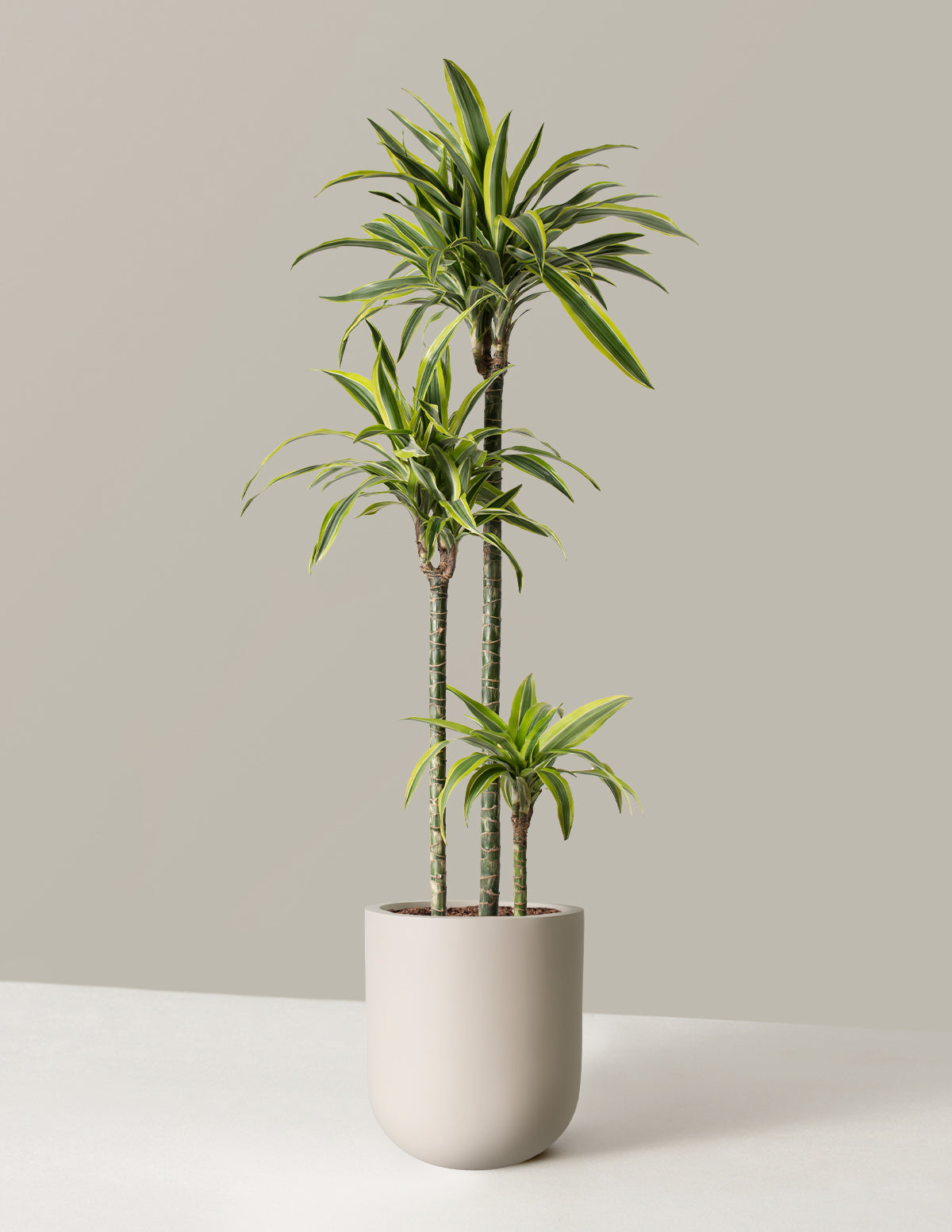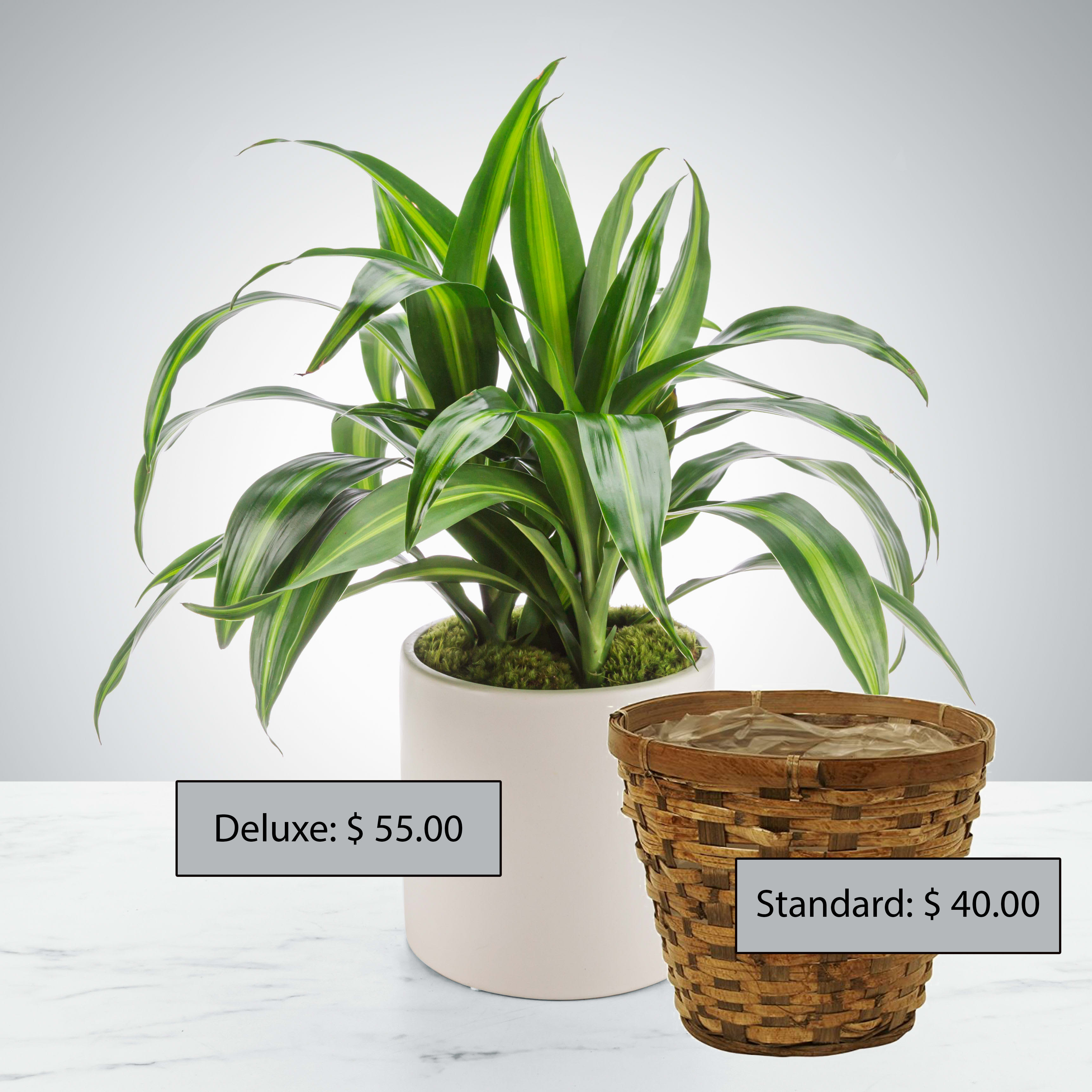Dracaena: The Easy-Going Houseplant You Need to Know
You know those spiky, sometimes colorful houseplants you see kicking around offices and living rooms? Chances are, you’ve spotted a Dracaena. These plants are super popular, and for good reason. They’re generally pretty low-maintenance, come in a bunch of cool varieties, and can add a nice touch of green (or even red and yellow!) to your space.
Where Do Dracaenas Come From Anyway?
Dracaenas aren’t some newfangled hybrid; they’ve been around for ages. They originally hail from warmer parts of the world, like Africa, Asia, and even some tropical islands. This tropical background gives them a preference for warmth and a bit of humidity, although they’re surprisingly adaptable to indoor conditions.

So Many Dracaenas!
One of the neat things about Dracaenas is the sheer variety. You’re not just getting one type of plant. Some of the common ones you might encounter include:
Dracaena marginata (The Dragon Tree)
This is probably one of the most recognizable Dracaenas. It’s got slender, cane-like stems and long, thin, green leaves that often have a reddish or purplish edge. They can get pretty tall over time, giving a nice vertical element to your indoor jungle.

Dracaena fragrans (Corn Plant)
You might know this one by its broad, strap-like leaves that often have yellow or white stripes down the middle. As the name suggests, it can sometimes produce fragrant white flowers, though this is less common indoors.
Dracaena reflexa (Song of India/Jamaica)
These guys have shorter, wider leaves that are often a vibrant mix of green and yellow. They tend to have a bushier appearance than some other Dracaenas.

Dracaena sanderiana (Lucky Bamboo)
Okay, technically, this isn’t a true bamboo, but it’s often sold as “lucky bamboo.” It’s a type of Dracaena with slender, green stalks that are often trained into interesting shapes.
Why Are Dracaenas So Popular?
There are a few key reasons why these plants are such winners in the houseplant world:
They’re Relatively Easy to Care For
For folks who don’t have a natural green thumb, Dracaenas are pretty forgiving. They don’t need constant watering and can tolerate a bit of neglect. This makes them a great choice for beginners or busy people.
They Look Great
With their diverse leaf shapes and colors, Dracaenas can really add visual interest to any room. Whether you want something tall and elegant or short and bushy, there’s likely a Dracaena that fits the bill.
They Help Purify the Air (Maybe?)
You might have heard that houseplants can clean the air. While the extent of this is often debated, some studies have suggested that Dracaenas can help remove certain toxins from the air. Even if it’s just a little bit, it’s a nice bonus!
How to Keep Your Dracaena Happy
While they’re not super demanding, Dracaenas do have some preferences. Here’s a basic rundown of how to keep them thriving:
Light
Most Dracaenas like bright, indirect light. Direct sunlight can scorch their leaves, so avoid putting them right in a south-facing window. They can often tolerate lower light conditions, but they might not grow as vigorously or show their colors as intensely.
Watering
Overwatering is probably the biggest mistake people make with Dracaenas. They like their soil to dry out a bit between waterings. Stick your finger about an inch or two into the soil – if it feels dry, it’s time to water. When you do water, make sure to soak the soil thoroughly and then let the excess drain out. Yellowing or browning leaf tips can be a sign of overwatering or inconsistent watering.
Soil
A well-draining potting mix is key for Dracaenas. You can use a general-purpose houseplant mix.
Temperature
Dracaenas prefer average room temperatures, generally between 65-75°F (18-24°C). They don’t like extreme cold or drafts.
Humidity
Coming from tropical regions, Dracaenas appreciate a bit of humidity. If your air is very dry, especially in the winter, you can try misting your plant occasionally or using a humidifier. Brown leaf tips can also indicate low humidity.
Fertilizing
You don’t need to fertilize Dracaenas heavily. A light feeding with a balanced liquid fertilizer during the growing season (spring and summer) every month or two is usually sufficient. Avoid fertilizing in the fall and winter when the plant’s growth slows down.
Common Problems to Watch Out For
Even though they’re relatively easygoing, Dracaenas can sometimes run into a few issues:
Yellowing Leaves
This can be a sign of overwatering, underwatering, or even nutrient deficiencies. Pay attention to your watering habits and consider a light feeding.
Brown Leaf Tips
As mentioned earlier, this can be due to overwatering, underwatering, low humidity, or even too much fluoride in tap water. Try using filtered or distilled water.
Leaf Drop
Some leaf drop is normal, especially older leaves. However, sudden or excessive leaf drop can be a sign of stress due to temperature changes, drafts, or improper watering.
Pests
Dracaenas can occasionally attract pests like spider mites or mealybugs. Keep an eye on your plant and treat any infestations promptly with insecticidal soap or neem oil.
Pruning Your Dracaena
If your Dracaena gets too tall or leggy, you can prune it. Use clean, sharp pruning shears and make a cut just above a leaf node (the point where a leaf grows from the stem). Pruning can encourage new growth below the cut.
Dracaenas: A Great Choice for Your Indoor Space
Whether you’re a seasoned plant parent or just starting out, Dracaenas are a fantastic option to bring some life and greenery into your home or office. Their variety, relatively easy care, and appealing looks make them a popular choice for good reason. Just give them the right light, don’t overwater them, and they’ll happily thrive and add a touch of the tropics to your space.
Conclusion
Dracaena plants stand out as resilient and visually diverse houseplants, perfectly suited for individuals seeking low-maintenance yet impactful greenery. Their adaptability to indoor environments, coupled with the array of leaf shapes and colors available across different species, ensures there’s a Dracaena to complement any aesthetic. By understanding their basic needs regarding light, water, and humidity, you can cultivate a thriving Dracaena that not only enhances your living space but also contributes to a healthier indoor atmosphere. Their popularity is well-deserved, making them a staple in homes and offices worldwide.
Frequently Asked Questions About Dracaena Plants
How often should I repot my Dracaena?
Generally, you’ll only need to repot your Dracaena every one to two years, or when you notice the roots starting to outgrow the current pot. Signs include roots growing out of the drainage holes or the plant drying out very quickly after watering. Choose a pot that’s only slightly larger than the previous one.
Are Dracaena plants toxic to pets?
Yes, unfortunately, Dracaena plants are considered toxic to both cats and dogs if ingested. They contain saponins, which can cause symptoms like vomiting, drooling, and loss of appetite. It’s best to keep them out of reach of your furry friends.
Can I propagate my Dracaena plant?
Yes, Dracaenas can be propagated through stem cuttings. You can take a healthy stem cutting, allow the cut end to callous over for a day or two, and then plant it in moist potting soil. With warmth and humidity, it should eventually develop roots.
Why are the tips of my Dracaena leaves turning brown and crispy?
Brown and crispy leaf tips can be caused by several factors, including low humidity, inconsistent watering (both over and under), or the presence of fluoride or other salts in your tap water. Try increasing humidity, being more consistent with your watering, or using filtered or distilled water.
My Dracaena is losing its lower leaves. Is this normal?
Dracaena Plant
